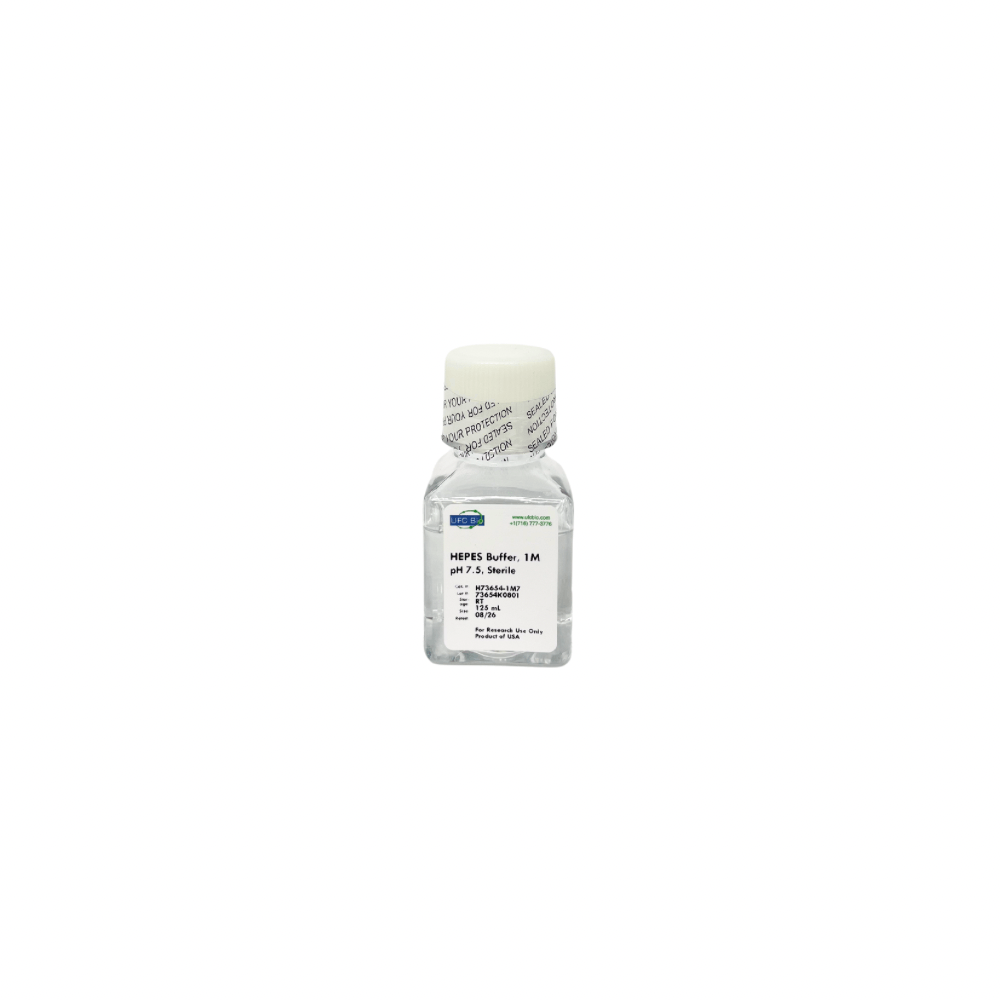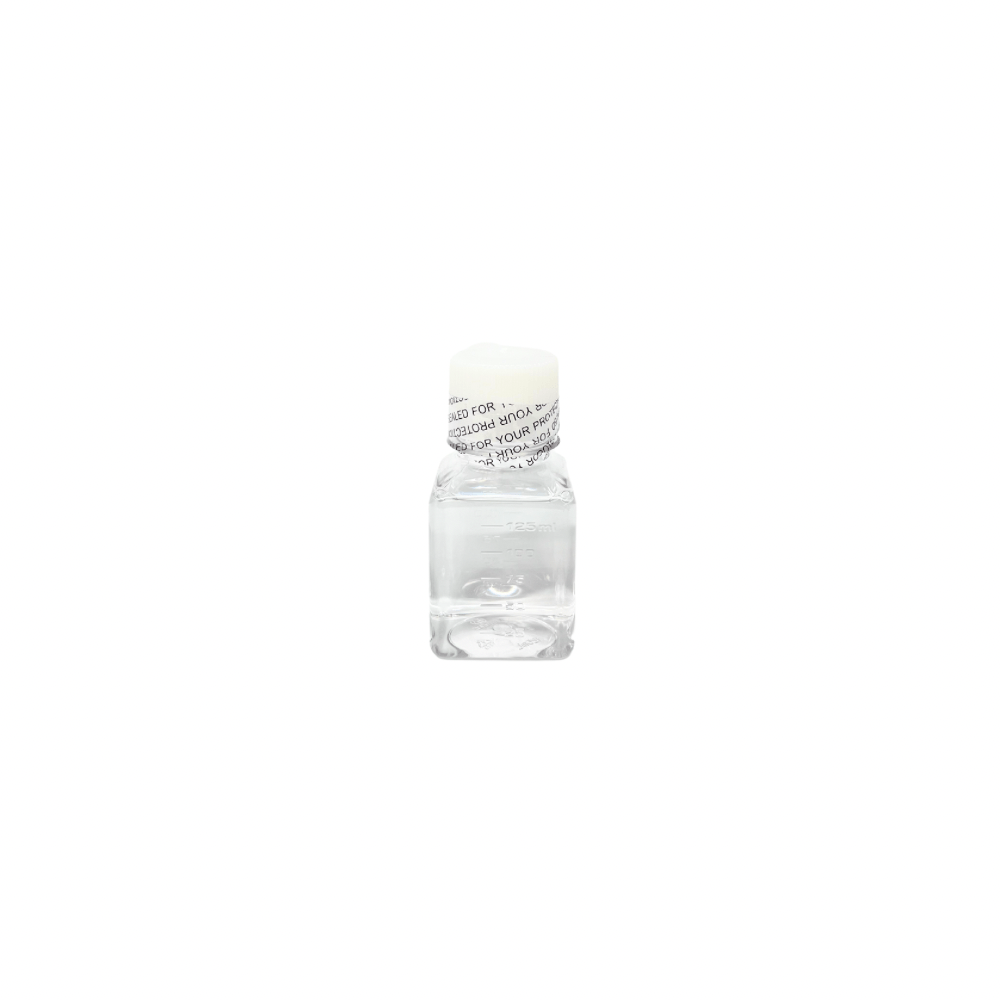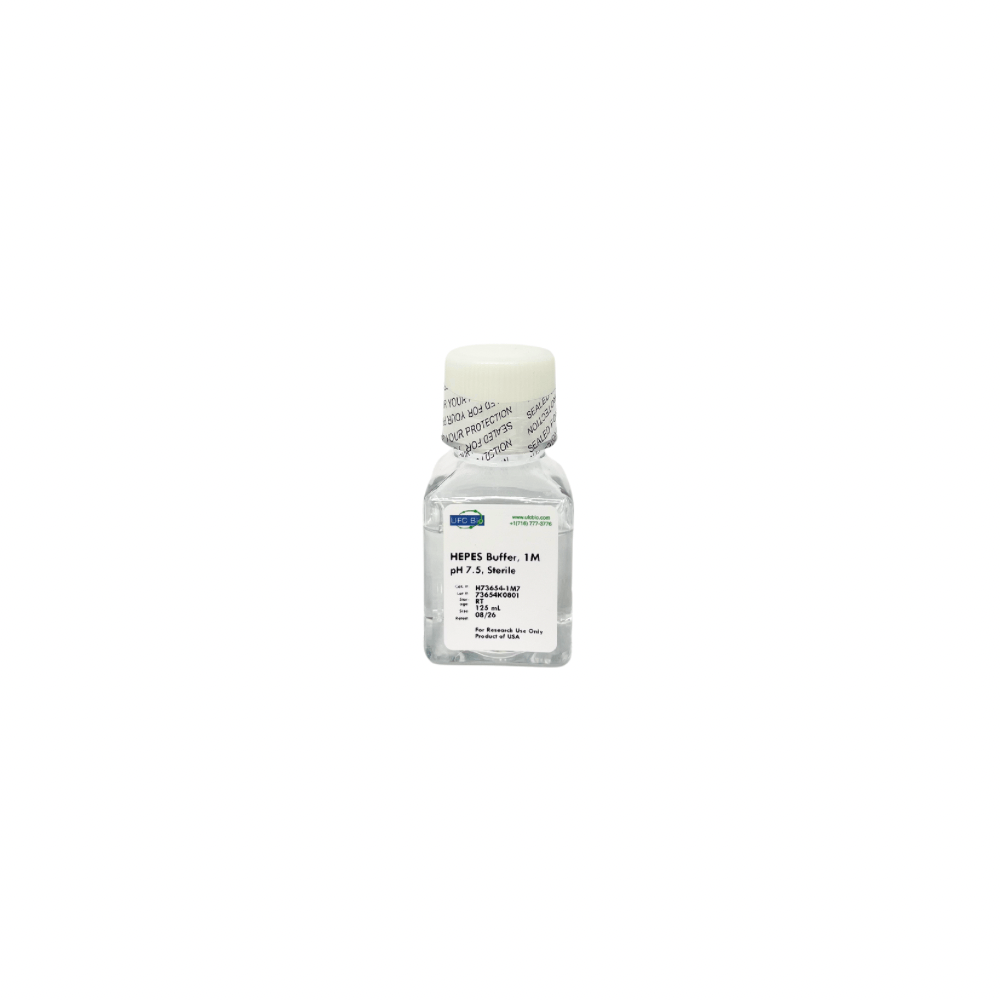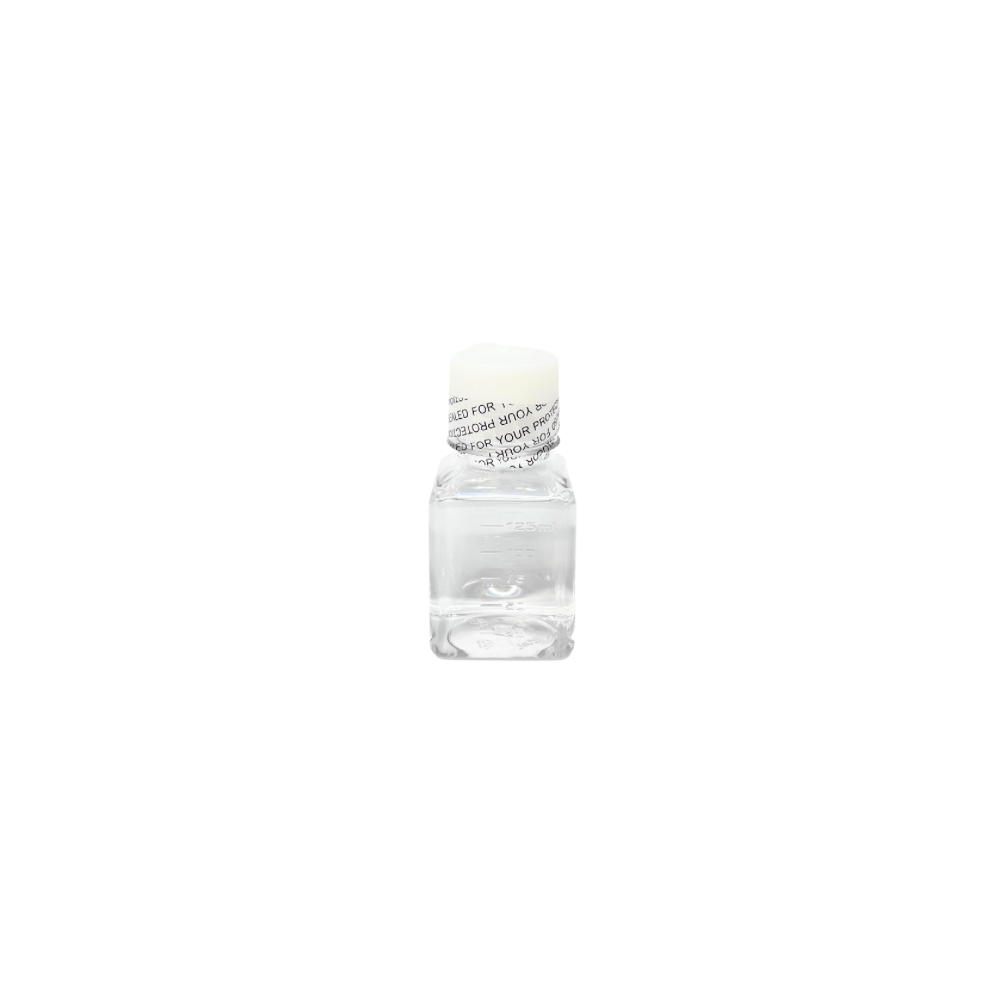HEPES buffer, formally known as N-2-hydroxyethylpiperazine-N'-2-ethanesulfonic acid, provides excellent stability within a narrow pH range of 7.4 to 8. UFC BIO manufactures it using 0.2 µm sterile filtration, guaranteeing it is entirely free of DNase and RNase contamination.
Safety Data Sheet (SDS) and Certificate of Analysis (COA) - available
- Expiration date: 2 years from manufacturing date
100% Completely Sterile:
Commonly used Applications:
- Maintains stable physiological pH in cell and tissue culture
- Protein & Enzyme Applications
- Provides pH stability in immunoassays, electrophysiology, nucleic acid work, and drug screening
CAUTION: Research use only.
Product Properties
| Property | Value |
|---|---|
| Concentration | 1M |
| pH | 7.4-8.0 |
| Form | Liquid |
| Storage Temperature | 2–8°C |
| Test | Specification |
|---|---|
| Sterilization and Filtration | Sterile (DNase, RNase free), 0.22μm filtered |
| Expiration | 2 years from manufacturing date |
FREE SHIPPING WITHIN THE CONTINENTAL USA OVER $50 FOR UFC BIO PRODUCTS.
30-Day Returns Free standard shipping to the lower 48 US states.
Upon receiving and inspecting your return, we’ll issue a full refund within 3-5 business days. Returns are not accepted beyond 30 days from delivery unless an extension is approved.International Shipping & Returns
For orders shipped outside the contiguous USA and Canada, shipping costs are determined at checkout. If this option isn’t available, please reach out to us at info@ufcbio.com for support.
- Choosing a selection results in a full page refresh.
- Opens in a new window.






